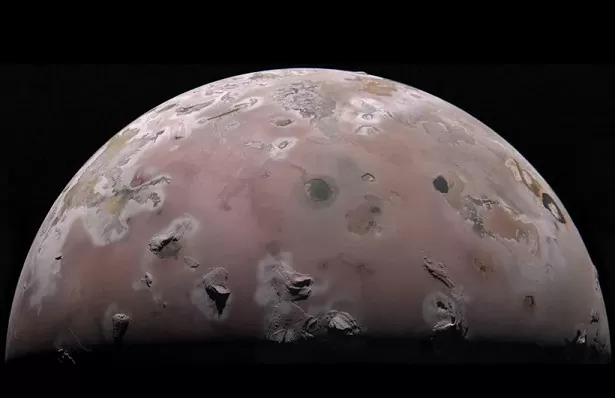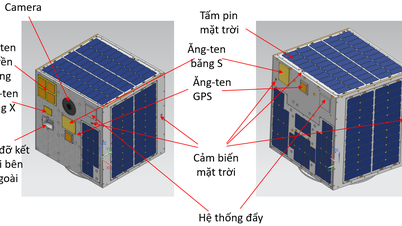According to new research, NASA scientists have discovered that volcanoes on Jupiter's moon Io are the most powerful in the solar system.
 |
| The surface of Jupiter's moon Io is dotted with active volcanoes. (Source: NASA) |
Io is only slightly larger than the Moon, with a diameter of 3,600 km, but it has about 400 volcanoes, according to NASA. The plumes from these eruptions can stretch several kilometers into space and can even be seen from Earth through large telescopes.
These impressive volcanoes were first discovered by scientist Linda Morabito in 1979. They were later photographed by NASA's Voyager 1 spacecraft.
“Since the discovery of these volcanoes, astronomers have wondered for decades what lava source fuels such powerful volcanoes,” said Scott Bolton, NASA principal investigator.
The Juno spacecraft, launched in 2011 to study Jupiter and its moons, has already made two flybys of Io in 2023 and 2024, coming within 1,500 km of Io. “The data from the two Juno flybys have given us some insight into how these volcanoes actually work,” Bolton said.
During these flybys, the Juno spacecraft collected data that allowed scientists to measure the gravitational force between the moon Io and its host planet, Jupiter.
Io orbits Jupiter at an average distance of 422,000 km, completing its elliptical orbit every 42.5 hours. Because of the shape of its orbit, Io’s distance from its host planet changes, as does the gravitational pull between them. This means that Io is constantly being pulled in and out of Jupiter like a balloon in a process called tidal flexing.
“This constant flexing generates enormous energy in the form of heat, literally melting parts of Io's inner core,” says scientist Scott Bolton.
It was previously thought that Io’s interior might contain a vast magma ocean that stretches beneath its entire surface. However, research led by Bolton, published on December 12 in the US journal Nature , shows that this is not true.
The team's data found that Io has a mostly solid interior, and that each of Io's volcanoes has its own magma reservoir, located below the volcano.
“Juno’s discovery that tidal forces don’t always create lava oceans forces us to rethink what we know about Io’s deep interior,” said study co-author Ryan Park.
These research results also have reference significance for Jupiter's moon Europa and Saturn's moon Enceladus, as well as exoplanets outside the solar system.
“Our new findings offer an opportunity to reconsider what we know about the formation and evolution of planets,” said Park.
Source





![[Photo] The captivating scenery of the fragrant maple forest in Quang Tri](/_next/image?url=https%3A%2F%2Fvphoto.vietnam.vn%2Fthumb%2F1200x675%2Fvietnam%2Fresource%2FIMAGE%2F2025%2F12%2F10%2F1765353233198_lan09046-jpg.webp&w=3840&q=75)
![[Photo] Explore the US Navy's USS Robert Smalls warship](/_next/image?url=https%3A%2F%2Fvphoto.vietnam.vn%2Fthumb%2F1200x675%2Fvietnam%2Fresource%2FIMAGE%2F2025%2F12%2F10%2F1765341533272_11212121-8303-jpg.webp&w=3840&q=75)


























![[Video] The craft of making Dong Ho folk paintings has been inscribed by UNESCO on the List of Crafts in Need of Urgent Safeguarding.](https://vphoto.vietnam.vn/thumb/402x226/vietnam/resource/IMAGE/2025/12/10/1765350246533_tranh-dong-ho-734-jpg.webp)








































































Comment (0)